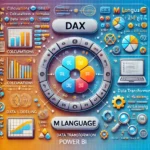SQL Server vs. SQL Server Management Studio: A Simple Guide to Understanding Their Roles
If you’re stepping into the world of Microsoft SQL Server, you might find yourself scratching your head over SQL Server and SQL Server Management Studio (SSMS). They’re both crucial but serve different functions. In this easy-to-understand guide, we’ll break down what each does and how they differ.
What is SQL Server? The Heart of Microsoft’s Database World
SQL Server is Microsoft’s core relational database management system (RDBMS). It’s the powerhouse for storing, managing, and retrieving structured data. Here’s what it brings to the table:
- Data Storage: Efficiently handles large datasets and complex queries.
- Security: Offers robust features like encryption and role-based access control.
- Scalability: Built to handle growing data volumes and user demands.
- High Availability: Supports failover clustering and database mirroring to minimize downtime.
- Advanced Analytics: Comes with tools like SQL Server Reporting Services (SSRS) and SQL Server Analysis Services (SSAS) for data analytics and reporting.
What is SQL Server Management Studio (SSMS)? Your Handy SQL Server Toolbox
SQL Server Management Studio (SSMS) is a separate tool that makes managing SQL Server a breeze. While it’s not the database system, it’s indispensable for interacting with SQL Server. Here’s why:
- Database Administration: Offers a user-friendly interface for tasks like creating and modifying databases.
- Query Development: A robust environment for writing and running SQL queries.
- Performance Monitoring: Comes with tools to keep an eye on SQL Server performance.
- Security Management: Allows you to manage user permissions and encryption settings.
- Integration: Works seamlessly with other Microsoft products, enhancing your tech ecosystem.
Amazon S3 vs. MongoDB: Choosing the Right Data Storage Solution
SQL Server vs. SQL Server Management Studio: Quick Comparison
| Aspect | SQL Server | SQL Server Management Studio (SSMS) |
|---|---|---|
| Type | RDBMS | Database Management and Query Tool |
| Core Functionality | Data storage, management, analytics | Database administration, query development |
| Deployment | Installed as a server | Installed as a client tool |
| User Roles | Admins, developers, end-users | Admins, developers |
| User Interface | Command-line (T-SQL), some GUI | Full GUI |
| High Availability | Supports failover clustering | N/A |
| Query Execution | Executes queries | Develops and runs queries |
| Security | Database and server-level | Manages database security |
| Integration | Works with Windows Server, Active Directory | Integrates with SQL Server and other Microsoft tools |
FAQs
1. Do I need both SQL Server and SSMS?
Yes, SQL Server is the database system, while SSMS is the tool you’ll use to interact with it.
2. Can SSMS manage multiple SQL Server instances?
Absolutely! SSMS is designed to manage multiple instances of SQL Server.
3. Is SSMS free?
Yes, SSMS is a free tool provided by Microsoft to manage SQL Server instances.
Final Thoughts
SQL Server and SQL Server Management Studio (SSMS) are two peas in a pod. SQL Server is your go-to for database management, while SSMS makes it easier to interact with SQL Server. Understanding the roles of each is key to effective database management.
For more insights, check out this Database Management Trends 2023 report.






